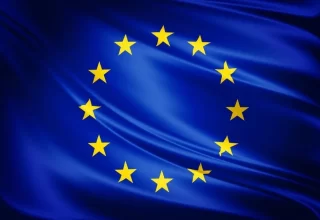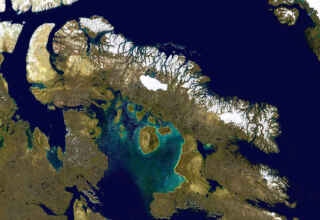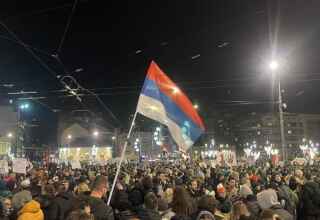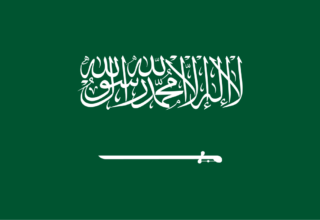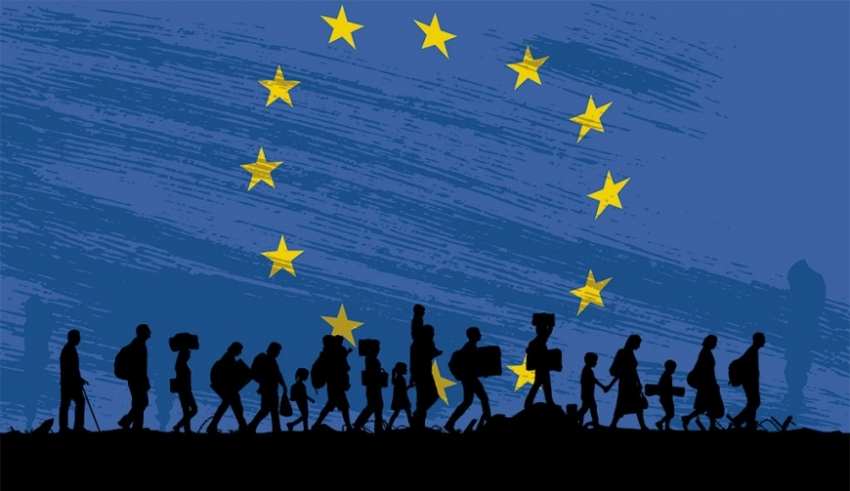
It is undeniable that human trafficking is a global challenge. About 25 million people worldwide are trafficking victims according to the UN (UNODC, 2020). The majority of trafficking victims are between 18 and 24 years of age (ibid). 43% of victims are used for forced commercial sexual exploitation, of whom 98% are women and girls (ibid). Human trafficking and smuggling have been among the fastest growing forms of transnational crime (Shelley, 2010). The growth of human trafficking and smuggling has been most apparent in the past two decades. The root cause of the problem is hard to define as there are several actors and underlying factors involved in the process that make it difficult to find universal solution. Humans are trafficked for labour exploitation, for marriage, for begging, and even for their organs. Human trafficking has gained a universal phenomenon and we may say that all continents of the world have cases of human trafficking (Shelley, 2010).
While the multilateral organizations recognize the devastating consequences of the problem and there is a universal political acknowledgement that trafficking in persons constitute an international crisis, however, there is no common approach and agreement on formulating the responsive mechanism to tackle the problem neither at national nor international level (Kotiswaran, 2019). The first global step in defining and countering trafficking was taken by the UN. In 2000, the UN published the Convention against Transnational Organized Crimes (UN Convention against Transnational Organized Crime and the Protocols Thereto, 2000 ) containing two protocols on human trafficking and human smuggling.
The first internationally accepted definition on human trafficking was set out in Palermo Protocol, indicating that “trafficking in persons shall mean the recruitment, transportation, transfer, harbouring or receipt of persons, by means of the threat or use of force or other forms of coercion, abduction, fraud, deception, abuse of power, or position of vulnerability, giving or receiving payments or benefits to achieve consent of a person, having control of another, for the purpose of, exploitation. Exploitation shall include at a minimum, the exploitation of the prostitution of others, or other forms of sexual exploitation, forced labour or services, slavery or practices similar to slavery, servitude, or the removal of organs” (UN protocol to prevent, suppress and punish trafficking in human beings, 2000: Article 3, para (a)).
The adoption of Palermo Protocol was a crucial factor in recognizing human trafficking as a significant problem by the states. Its ratification prompted legislative initiatives and anti-trafficking laws being drafted and implemented by the UN member states. Thus, Palermo Protocol had a fundamental impact on setting the direction that was later taken by states and international organizations in tackling the human trafficking issues. However, Palermo Protocol is mostly criticized for offering solely law enforcement and organized crime-based perspectives, while lacking the human rights-based perspective in counter-trafficking, including recognizing victims’ rights and protection measures (Scarpa, 2020). Besides, time has shown that the UN solutions for trafficking is a global driven, broad-based and directed for diverse constituencies. There is the need for regional and state-based initiatives that reflect the context and respond to the challenges locally.
The EU’s approach
The European Union recognized human trafficking as a major problem and threat back in 1989 through passing the resolution on Prostitution and Trafficking in Persons, followed in 1993 by the Resolution on International Co-operation Against Trafficking in Persons (Wylie and McRedmond, 2010). By that time, the problem of trafficking was linked to irregular migration, organized crime and civil wars. Additional responses included the 2002 Council Framework Decision ‘On Combating Trafficking in Human beings’ and the 2004 Council Directive ‘On the Residence Permit Issued to Third-Country Nationals who are victims of trafficking in human beings’ (ibid). Both, the 2002 Framework Decision and the 2004 Council Directive followed the UN and the Palermo Protocol in a sense that the main focus was on crime control, crime of trafficking rather than the concern for the human rights of the victims, their protection or even support (ibid). It was not until 2009, when the EU started to modify the perspective and put forward a new proposal that expanded the scope and provided conditions for victims’ rights and support (Brysk and Choi-Fitzpatrick, 2012). Additionally, the proposal included the prevention and protection measures aimed at combating the demands perceived to foster trafficking. In 2011, the EU adopted the Directive on preventing and combating trafficking in human beings and protecting its victims that replaced the Council Framework Decision 2002. The EU Anti-trafficking Directive 2011 has been the backbone of the EU’s recent efforts in combatting human trafficking. The European Commission has monitored and supported the transposition and implementation of the Directive in Member States (EU Directive, 2011).
Apart from the above-mentioned policy proposals and directives, the EU has also partnered with other agencies, NGOs to support trafficking victims. The Organization for Security and Co-operation in Europe (OSCE) which has a larger geographical membership than the European Union, likewise engaged in counter trafficking during the last decade with special emphasis on a human rights approach to trafficking, placing its anti-trafficking work in the context of its Office for Democratization and Human Rights (Wylie and McRedmond, 2010). It also advocates that all member states consider creating the National Referral Mechanisms for identifying and assisting victims of human trafficking (ibid).
Despite the multi-directional European institutional responses, policies and initiatives to the issue of human trafficking, yet the EU continues to face increasing trafficking. The EU has among its 27 member states both transit and source countries but is as a whole primarily a destination region. Between 2017 and 2018, there were more than 14 000 registered victims within the European Union (Data Collection on Trafficking in Human beings in the EU, 2020). Nearly half of the victims of trafficking within the European Union are the EU nationals and a significant number of them are trafficked within their own Member State (ibid). The majority of the victims in the EU are women and girls trafficked for sexual exploitation. Almost every fourth victim of trafficking in the EU is a child. IOM has estimated that about 120,000 women and children are trafficked every year through the Balkans alone (IOM global data hub on human trafficking). Women are also trafficked from Eurasia, Asia, Latin America, and Africa. Russia is a major source of sexual trafficking victims and a host country for both victims of sexual and labour trafficking. At the same time, it is a transit country for those victims whose destination is Western Europe (Shelley, 2010). Hundreds of thousands more are smuggled into Europe from North Africa, Turkey and the Eastern Europe.
Traffickers prey on social inequalities as well as economic and social vulnerability of people, which have been exacerbated by the Covid-19 pandemic, making it easier for perpetrators to find victims (UNODC, 2020 ). The pandemic also hindered victims’ access to justice, assistance and support, and hampered the criminal justice response to the crime (ibid). Moreover, traffickers moved to a new business model of online recruitment and exploitation of victims, making it more difficult for law enforcement and the judiciary to respond.
Considering the new realities and factors, the EU has initiated a new strategy combatting trafficking in human beings. The new strategy recognizes trafficking in human beings as a complex criminal phenomenon and focuses on prevention through protection of victims to prosecution and conviction of traffickers (EU strategy, 2021-2025). It proposes key initiates including implementation of the Anti-trafficking Directive; appropriate funding to combat trafficking inside and outside the EU; reducing demand that foster trafficking; breaking the criminal model to halt victims’ exploitation including disrupting criminal business models; building capacity for a robust criminal justice response; protecting, supporting and empowering the victims, especially women and children; strengthening international dimension and enhancing information sharing and criminal intelligence on trafficking and related crimes and criminal networks; facilitating cross-border and international operational and judicial cooperation in countries affected by trafficking (ibid).
What’s next?
Despite progress being made over the last decade to reinforce the Union’s response against trafficking in human beings, the threat of being trafficked remains high for any vulnerable person. The crime is becoming less visible and easily spread due to digital platforms. Traffickers often go online to target victims – such as using gaming and social media sites to groom children. Trafficking in human beings impacts the society, rule of law and sustainable development in the EU Member States and non-EU countries in general. Poverty, political instability, civil wars are part of the root causes of trafficking in Europe, especially in post-Soviet states where the level of unemployment is high and social safety nets are dismantled. As data shows, women and children are greatly vulnerable for trafficking and in most cases represent trafficking victims making up 92% of the victims of sexual exploitation in the European Union (Data collection on trafficking in human beings in the EU, 2020). People who were trafficked for sexual exploitation made up 60% of the total, while another 15% were trafficked for labor purposes (ibid).
Protecting and empowering trafficking victims are two among several dimensions that the EU needs to focus on. In this process apart from human rights approach, gender-based and children sensitive policies are crucial to assist victims in the process of rehabilitation and reintegration into society. It is obvious that trafficking does not end just holding the abusers accountable but the states, civil organizations, NGOs need to remedy the underlying human rights abuses that has created the conditions for trafficking. The states must create the space for the trafficking victims to regain their agencies and to demonstrate their commitment to protecting the equality and dignity of all human beings, instead of punishing the trafficking victims as illegal migrants and criminals.
The EU states also need to leave out their practices of prioritizing the forms of trafficking and treat any trafficking victims equally. Considering that human trafficking is not a single country problem, the EU states must follow coordinated policies and programmes oriented on the victims’ rights and needs.
References
Brysk, A., & Choi-Fitzpatrick, A. (2012). From human trafficking to human rights. Reframing Contemporary Slavery.
Data Collection on Trafficking in Human beings in the EU (2020). Accessed 3 August 2021 <https://ec.europa.eu/antitrafficking/sites/default/files/study_on_data_collection_on_trafficking_in_human_beings_in_the_eu.pdf>.
EU Directive2011/36/. Accessed 3 August 2021 <https://eur-lex.europa.eu/legal-content/en/TXT/?uri=CELEX%3A32011L0036>.
EU strategy on combatting trafficking in human beings (2021-2025). Accessed 2 August 2021 <https://ec.europa.eu/homeaffairs/sites/default/files/pdf/14042021_eu_strategy_on_combatting_trafficking_in_human_beings_2021-2025_com-2021-171-1_en.pdf>.
IOM global data hub on human trafficking. Accessed 3 August 2021 <https://www.ctdatacollaborative.org/>.
Kotiswaran, P. (2019). Trafficking: A development approach. Current Legal Problems, 72(1), 375-416
Shelley, L. (2010). Human trafficking: A global perspective. Cambridge University Press
Scarpa, S. (2020). UN Palermo trafficking protocol eighteen years on: A critique. The Palgrave International Handbook of Human Trafficking, 623-640
UNODC (2020) “Global Report on Trafficking in Persons”. Accessed 3 August 2021 <https://www.unodc.org/documents/dataandanalysis/tip/2021/GLOTiP_2020_15jan_web.pdf
UN Convention against Transnational Organized Crime and the Protocols Thereto (2000). Accessed 3 August 2021 <https://www.unodc.org/unodc/en/organizedcrime/intro/UNTOC.html>.
UN protocol to prevent, suppress and punish trafficking in human beings (2000). Accessed 4 August 2021 <https://www.ohchr.org/en/professionalinterest/pages/protocoltraffickinginpersons.aspx>.
UNODC (2020) “Impact of the covid-19 pandemic on trafficking in persons”. Accessed 2 August 2021 <Mahmoud Refaat: The European Institute for International Law and International Relations.

